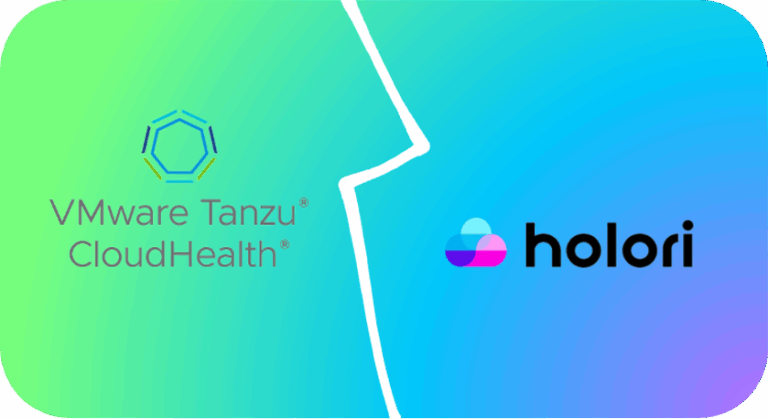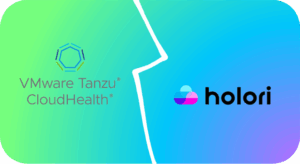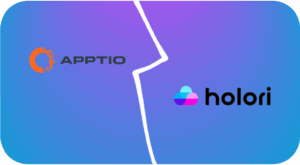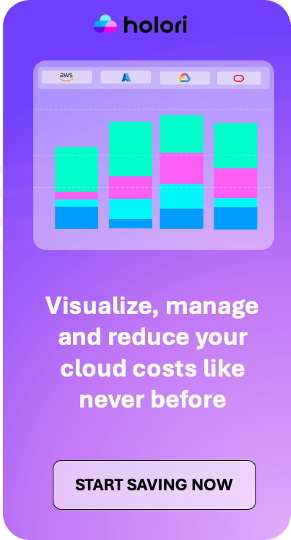Are you looking for a CloudHealth alternative that delivers the same capabilities without the complexity? This comparison breaks down CloudHealth vs Holori and how they stack up on features, pricing, and user experience and why modern teams are choosing Holori for faster, more visual FinOps.
TL;DR
- CloudHealth (now VMware Tanzu CloudHealth, owned by Broadcom) is an established multi-cloud cost management platform designed for enterprises that need comprehensive governance, compliance automation, and deep integration with VMware ecosystems.
- Holori is a modern, visual FinOps platform that prioritizes speed, clarity, and cost efficiency, delivering powerful cost management, allocation, and infrastructure visualization without the heavyweight enterprise overhead.
If you’re running large-scale VMware environments and need tight integration with VMware Tanzu services, CloudHealth makes sense. But if you want an alternative with intuitive cloud visibility, automated infrastructure diagrams, transparent pricing, and the ability to get started in hours instead of months, Holori is the superior choice.
Quick Comparison
Lets compare CloudHealth vs Holori around key features for modern FinOps tools.
| Area | CloudHealth | Holori |
| Primary focus | Multi-cloud cost management with strong VMware integration, governance automation, compliance | Modern FinOps platform: visual cost management, infrastructure diagrams, powerful cost allocation |
| Typical customer | Large enterprises, especially VMware shops; organizations with mature cloud governance programs | Startups, scaleups, SMBs, and mid-market teams; FinOps practitioners seeking immediate insights |
| Key strengths | Policy automation, compliance frameworks, VMware integration, established market presence | Intuitive UI, virtual tagging, fast setup, transparent pricing, visual infrastructure diagrams |
| Pricing model | Contract-based: 2.5% (12/24 months) or 2.2% (36 months) of tracked cloud spend, with minimum commitments starting at $45K/year | Self-serve with free tier; Enterprise: flat 1% of tracked cloud spend, no minimums |
| Time to value | Weeks to months (requires configuration, tagging strategy, policy setup) | Hours to days (intuitive setup, quick onboarding, auto-generates diagrams) |
Feature Comparison: What Actually Sets Holori Apart
1. Cost Allocation & Virtual Tagging
CloudHealth: Relies heavily on native cloud provider tags for cost allocation. This means you need a comprehensive, well-maintained tagging strategy across all your resources before CloudHealth can give you accurate cost breakdowns. If your tagging is inconsistent, which is common, your cost allocation will be incomplete or inaccurate.
Setting up chargeback and showback requires configuring business mappings, perspectives, and allocation rules, which can take weeks or months to get right.
Holori: Uses virtual tagging, a revolutionary approach that lets you allocate costs without relying on cloud provider tags. Using an intuitive drag-and-drop interface, you can map resources to teams, projects, cost centers, or any business dimension you choose.
This means:
- No waiting for engineering to implement perfect tagging
- Immediate cost visibility across any business structure
- Flexibility to reorganize allocations as your organization evolves
- Visual cost allocation trees that make hierarchies crystal clear
Holori’s cost allocation is both more powerful and easier to use than CloudHealth’s traditional approach and represents a modern alternative.
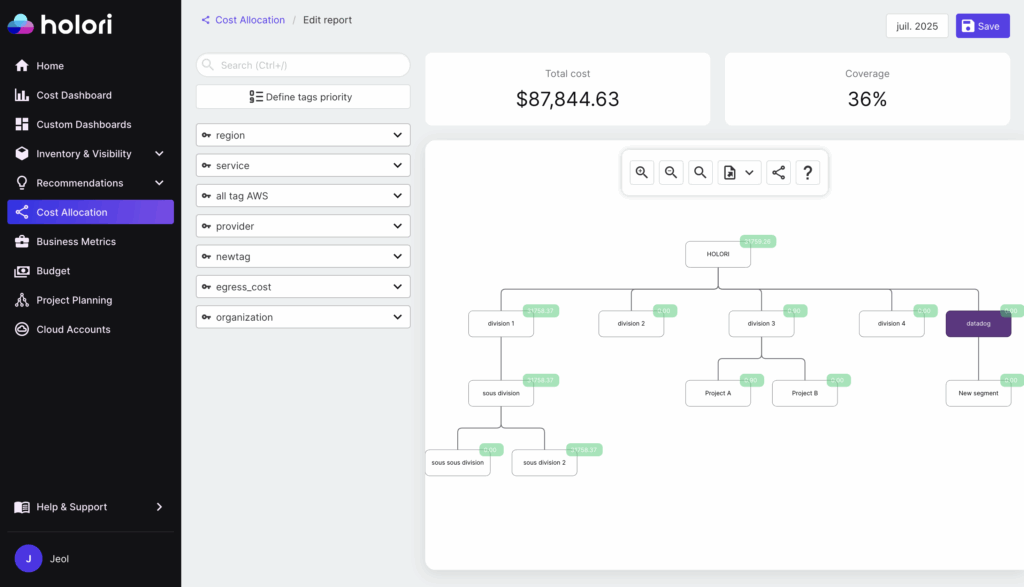
Bottom line: CloudHealth forces you to fix your tagging before you can allocate costs properly. Holori lets you allocate costs immediately, regardless of your tagging maturity.
2. User Experience & Learning Curve: CloudHealth vs Holori is a generational clash
CloudHealth: Built in an earlier era of enterprise software. The interface is functional but feels dated: multiple nested menus, dense tables, and a steep learning curve. New users often need training sessions and ongoing support to navigate the platform effectively.
Many teams report that CloudHealth feels like a tool designed for IT finance specialists rather than the engineers who actually manage cloud infrastructure.

Holori: Designed with modern UX principles. The interface is clean, intuitive, and responsive, engineers can jump in and find what they need without training. The visual approach means less time clicking through menus and more time understanding and optimizing costs.
Moreover, finance teams love it because the dashboards are clear and shareable. Engineering teams love it because it speaks their language with infrastructure diagrams.
Why this matters: Adoption drives value. If your team doesn’t use your FinOps tool because it’s too complicated, it doesn’t matter how many features it has. Holori’s ease of use means faster adoption, which means faster ROI.
3. Multi-Cloud Support & Modern Integrations
CloudHealth: Supports AWS, Azure, and GCP, OCI and Alibaba, with particularly strong integration with VMware private cloud environments. However, CloudHealth is primarily focused on traditional infrastructure, it doesn’t natively support newer cloud-native services or emerging platforms.
Holori: Supports AWS, Azure, GCP, Datadog, Cloudflare, Scaleway, OCI OVHcloud. But Holori goes further by integrating modern cloud services that CloudHealth doesn’t cover:
- Monitoring and observability: Datadog
- Expanding support for European cloud providers
- Soon expanding to Cloud AI providers such as OpenAI, Anthropic…
Why this matters: Modern cloud infrastructure isn’t just about the big three hyperscalers, teams need visibility across their entire stack including AI services that are becoming major cost centers. On this topic, Holori offers a serious alternative to CloudHealth.
4. Visualization & Infrastructure analysis
CloudHealth: Provides dashboards and reports focused on cost metrics, utilization data, and compliance status. While functional, the visualization approach is traditional: spreadsheet like tables and standard charts that require significant interpretation. However, CloudHealth doesn’t automatically map your infrastructure or show how resources relate to each other visually.
Holori: Holori automatically generates interactive infrastructure diagrams that show exactly how your cloud resources are configured, how they connect and where they are located. Engineers and finance teams can see the entire architecture at a glance, understand resource relationships, and identify optimization opportunities without digging through tables.
The diagrams auto-update as your infrastructure changes, providing living documentation that keeps everyone aligned. This visual approach dramatically shortens the time between “what’s running?” and “what should we optimize?”
Why it matters: CloudHealth tells you what you’re spending. Holori, using a best in class diagramming rendering, shows you where and why in a format that’s instantly understandable to both technical and non-technical stakeholders.

5. Policy & Governance
CloudHealth: This is CloudHealth’s traditional strength. The platform offers sophisticated policy automation, compliance frameworks (HIPAA, SOC 2, PCI DSS), and governance controls. You can create complex rules that automatically enforce standards, trigger alerts, and even take remediation actions.
For enterprises with heavy compliance requirements and mature governance programs, these features are valuable.
Holori: Provides the governance features most teams actually use: budgets, alerts, cost anomaly detection, and optimization recommendations. While not as elaborate as CloudHealth’s policy engine, Holori covers the 90% use case: the practical governance that keeps teams informed and prevents cost surprises.
Trade-off: If you need to automate compliance workflows across dozens of accounts with intricate policy chains, CloudHealth has the edge. If you need practical governance that works out of the box, Holori delivers it faster and more simply.
Pricing: Transparent vs Enterprise Contracts
CloudHealth Pricing
CloudHealth follows an enterprise contract model with significant minimum commitments:
- CH150K tier: Supports up to $150K monthly AWS spend
- Starts at $45,000/year (12 month contract)
- Percentage: 2.5% of tracked cloud spend for 12-24 month contracts
- CH300K tier: Supports up to $300K monthly AWS spend
- Higher annual minimums with similar percentage fees
- Longer contracts: 36 month contracts get a modest discount (2.2% vs 2.5%)
- Overage charges: $0.03 per dollar over contracted limits
- Additional fees: Security features (CloudHealth Secure State) cost extra: $13,800/year for up to 100 cloud resources
CloudHealth’s pricing means:
- High upfront commitments before you’ve proven value
- Percentage based fees that scale linearly with cloud growth
- Less flexibility for teams with variable or seasonal spend
- Opaque pricing until you engage with sales
Example: A team spending $200K/month on AWS would pay approximately $60,000/year on a 12 month CloudHealth contract (2.5% × $200K × 12).
Holori Pricing
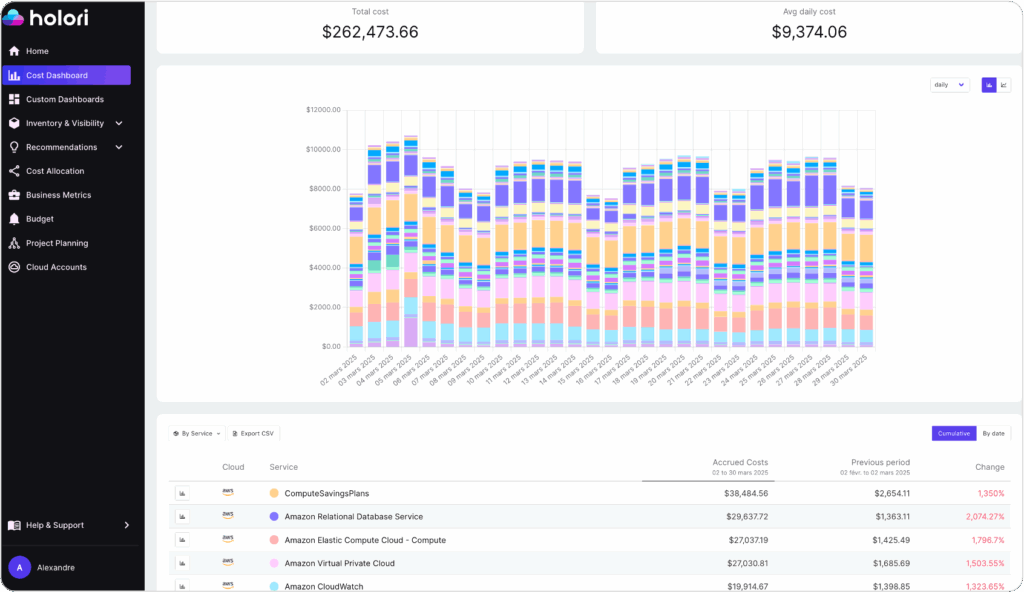
Holori offers transparent, flexible pricing designed for teams of all sizes:
- Free tier: Start immediately with basic features
- Pro and business plans: $49 and $199/ for small teams with cloud costs up to $10k and $20k.
- Enterprise pricing: Flat 1% of tracked cloud spend
- No minimums: No customer is too small
- No overage charges: Predictable, linear pricing
- All features included: No hidden fees for security, diagrams, or advanced allocation
Example: The same team spending $200K/month would pay approximately $24,000/year with Holori (1% × $200K × 12), 60% less than CloudHealth, with faster implementation and a better user experience.
Why pricing matters: CloudHealth’s high entry costs and percentage fees make it prohibitively expensive for small and mid-market teams. Even for enterprises, paying 2.5% of cloud spend for a tool with a dated interface and slow implementation doesn’t pencil out when modern alternatives like Holori deliver better experiences at 1%.
Implementation & Time to Value
CloudHealth
Implementing CloudHealth typically involves:
- Multi-week onboarding with sales and technical teams
- Comprehensive tagging strategy development and implementation
- Configuration of business mappings and cost perspectives
- Policy creation and governance framework setup
- Training sessions for finance and IT teams
- Potential engagement with professional services
Timeline: Weeks to months before you’re seeing actionable insights
This extended timeline makes sense for CloudHealth’s enterprise focus, but it also means delayed ROI and significant upfront investment in time and resources.
Holori
Getting started with Holori:
- Connect your cloud accounts (AWS, Azure, GCP…) in minutes
- Holori auto-generates infrastructure diagrams immediately
- Use visual drag-and-drop to allocate costs across teams
- Create custom dashboards and set up budget alerts
- Start identifying optimization opportunities
Timeline: Hours to a few days for full deployment
Holori’s fast time to value means teams can validate ROI quickly, identify quick wins immediately, and iterate on their FinOps practices without waiting months.
Keep an eye on the Broadcom Factor: CloudHealth’s Uncertain Future
In November 2023, Broadcom completed its acquisition of VMware. Since then, the cloud management market has watched with concern as Broadcom has restructured VMware’s product portfolio, changed licensing models, and increased prices across many products.
CloudHealth users are experiencing:
- Pricing uncertainty: Post-acquisition pricing changes and less flexible contract terms
- Product direction concerns: Questions about CloudHealth’s future investment and innovation pace
- Integration focus: Increasing emphasis on VMware/Broadcom ecosystem integration rather than cloud-agnostic capabilities
- Support changes: Shifts in account management and customer support structures
Many teams that invested heavily in CloudHealth are now reassessing whether the platform will continue to meet their needs or if they should migrate to more independent, agile alternatives.
Holori’s independence: As an independent, modern FinOps platform, Holori isn’t subject to corporate acquisition dynamics. The team is focused entirely on building the best FinOps experience for cloud-first teams.
When CloudHealth Might Make Sense
CloudHealth can be the right choice if:
- You’re deeply invested in VMware infrastructure and need tight Tanzu integration
- You have mature, complex governance and compliance requirements that demand sophisticated policy automation
- You have dedicated IT finance teams who will manage the platform full-time
- You’re prepared for multi month implementation timelines and high annual costs
- Your organization has standardized on VMware/Broadcom across the stack
But here’s the reality: These requirements apply to a small fraction of cloud teams.
Why Holori is the Modern Alternative
Most cloud teams need:
- Fast visibility into where money is going
- Clear allocation across teams and projects
- Visual infrastructure understanding
- Optimization recommendations they can act on immediately
- Pricing that scales reasonably with growth
- A tool engineers actually want to use
Holori delivers all of this, without the enterprise overhead, dated UX, or prohibitive costs of CloudHealth.
The Bottom Line
CloudHealth is an established platform with deep enterprise features—but it comes with enterprise complexity, enterprise timelines, and enterprise costs. For teams embedded in VMware ecosystems with sophisticated governance needs, it remains a viable option.
Holori represents the modern approach to FinOps: visual, intuitive, fast, and cost effective. It delivers the 90% of capabilities that 90% of teams actually need, without forcing you to pay for and maintain features you’ll never use.
FAQ: CloudHealth vs Holori
Can Holori replace CloudHealth for enterprises?
Yes. Holori covers the core FinOps capabilities that enterprises actually use: cost visibility, allocation, optimization recommendations, budgeting, anomaly detection, and multi-cloud support. While CloudHealth has more elaborate governance features, most enterprises find Holori’s practical governance covers their real world needs without the complexity.
What about CloudHealth’s policy automation?
CloudHealth’s policy engine is sophisticated, but many teams find it over engineered. Holori provides the governance and alerting that keeps teams informed and prevents cost surprises. For 90% of use cases, this is sufficient and far easier to maintain.
Does Holori support as many clouds as CloudHealth?
Holori supports AWS, Azure, GCP, OCI and OVHcloud, covering the vast majority of cloud infrastructure. Additionally, Holori plans to integrate with cloud AI providers (OpenAI, Anthropic) and monitoring tools (Datadog) that CloudHealth doesn’t cover natively.
How much cheaper is Holori really?
Substantially. CloudHealth charges 2.5% of cloud spend with $45K+ minimums. Holori charges 1% with no minimums. For a team spending $200K/month, that’s $24K/year with Holori vs $60K/year with CloudHealth, a 60% savings.
What about the Broadcom acquisition?
VMware’s acquisition by Broadcom has created uncertainty around CloudHealth’s future, pricing stability, and product direction. Holori is independent and focused entirely on building the best FinOps platform for modern cloud teams.
Can I see infrastructure diagrams with CloudHealth?
No. CloudHealth provides cost reports and dashboards but doesn’t automatically generate or maintain infrastructure diagrams. Holori’s auto generated diagrams are a unique differentiator that eliminates the documentation burden.
How long does Holori take to implement?
Hours to a few days. Connect your cloud accounts, and Holori immediately generates diagrams and cost insights. Most teams are fully operational within 48 hours, no consultants required.
Is Holori suitable for startups and small teams?
Absolutely. Holori has a free tier and starter plans at $49/month, making it accessible to teams of any size. CloudHealth’s $45K+ minimums price out smaller organizations entirely.
Does Holori support virtual tagging like you described?
Yes, and it’s one of Holori’s most powerful features. Virtual tagging lets you allocate costs visually without depending on cloud provider tags, giving you immediate cost visibility regardless of tagging maturity.
What if I need deeper governance than Holori provides?
For the small percentage of teams that need CloudHealth’s extensive policy automation (typically large enterprises with dedicated IT governance teams), CloudHealth remains an option. But we encourage you to evaluate whether you truly need that complexity, most teams find Holori’s practical governance is more than sufficient and far easier to use.
What’s the main difference in one sentence?
CloudHealth is an enterprise focused tool with extensive features and complexity; Holori is a modern FinOps platform that delivers the capabilities teams actually need with superior visualization, faster implementation, and 60% lower cost.

